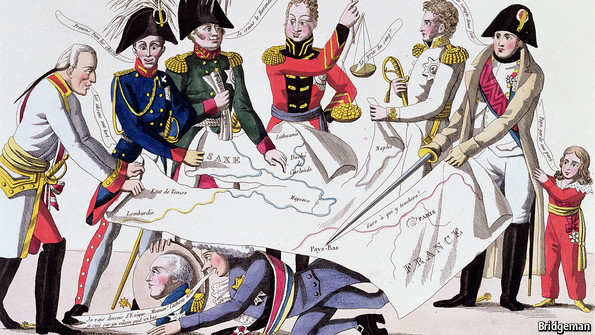超越民主的關鍵途徑~從《哲學的起源》談起
柄谷行人(Karatani Kojin, 1941~)主講
林暉鈞 翻譯
心靈工坊主辦
1)今天,為了紀念『哲學的起源』之出版,我來到這裡發表演說。關於我要說的事情,在書裡都有詳細的論述,所以今天我集中話題,只討論其中幾個重要的地方。我要說的,一共有三個要點,分別是:
1、愛奧尼亞的 Isonomia 與雅典的民主主義之不同
2、畢達哥拉斯──幾何學與輪迴轉生的觀念
3、蘇格拉底──神靈(Daemon)與廣場
《世界史的結構》出版後不久,我開始思考有關希臘的事情,作為我緊接著的思想工作。從黑格爾到海德格、漢娜鄂蘭等等,西洋的思想家們不斷地強調,希臘是世界史上特別的地區與時期,即使在今天,也值得當作我們的模範。我並不反對這樣的看法。但是我認為,只把希臘放在「西洋」的脈絡中,是西洋中心主義的偏見。希臘文化誕生在埃及、波斯等等文明國家的周邊──嚴格說起來,是亞周邊。
首先,希臘文明之所以擁有一些到今天仍然值得我們學習的地方,並不是因為它處於歷史高度進步的階段。反而是因為從中心來看,希臘處於遲緩的、未開發的階段。只不過,它的地理位置並沒有完全遠離亞細亞的文明,同時又不是在太近的周邊,不至於完全從屬於它。這樣的地理位置我稱之為亞周邊,以和周邊區別。亞周邊地區選擇性地接受從中心來的文明。換句話說,他們即使輸入中心傳來的文明,對於他們不喜歡的部份,則不接受。就是這種亞周邊的性格,阻止希臘走上亞細亞式專制國家的道路。
所謂希臘社會的發展還處於遲緩的階段,具體來說,就是它還殘留著氏族社會的影響。馬克思也認為,希臘之所以到處出現城邦、無法形成統一的國家,也是因為這個緣故。我們還可以說,希臘之所以產生民主制度(Democracy),就是因為它還殘留著氏族社會。在氏族社會裡,具有某一種的民主。美洲的原住民易洛魁(Iroquois)族,就是個有名的例子。他們形成部族聯邦,定期召開議會。在他們的議會裡,沒有所謂的多數決;他們會持續地討論,一直到反對的意見消失。而且,他們互相推選酋長。這樣的系統不僅發生於狩獵民的部族社會;遊牧民也或多或少,具有這樣的系統。
但是,我們是否可以說,就是這樣的氏族社會,帶來了希臘固有的文明?也不能這麼說。在那之前南下的希臘人所形成的,克里特與邁錫尼等國家,就是埃及式的專制國家。也就是說,從氏族社會變成專制國家,才是一般普通的發展。希臘人也有過這樣的傾向。殘留下來的氏族社會,並不是貴族制或平等主義的,而是非平等的、排他性的體制。希臘人的民主,就是因為否定這樣的體制而產生的。
因此,帶來希臘文明特徵的,不只是因為氏族社會的殘留,更在於他們強烈否定氏族社會的要素。這樣的否定,是從哪裡來的?它不是來自希臘本島,而是誕生在希臘移民所形成的,愛奧尼亞的城邦。愛奧尼亞的位置,在今天土耳其的海岸地帶。移民到愛奧尼亞的人們,一方面維持氏族社會中曾經有過的平等性,同時卻跳脫了氏族社會的排他性,建立了城邦(commune,自治體、公社)。Isonomia 這個原理,就誕生在愛奧尼亞的城邦。
後來在雅典,像梭倫(Solon)這樣的人們,試圖引進 Isonomia
的原理。他們的企圖所產生的,就是雅典的 Democracy。但事實上,愛奧尼亞的 Isonomia 和雅典的 Democracy,在本質上是不同的。關於這一點,我從漢娜鄂蘭,得到一點啓發。
就像漢娜鄂蘭所說的,--cracy 這個字尾,是「支配」的意思。Democracy
就是多數者支配。相對地,Isonomia 的意思,則是「無支配」(no rule)。我對於這個問題的思考,就從 Isonomia 和 Democracy 的差別出發。漢娜鄂蘭並沒有再深入探討這個問題。
經常有人說,雅典的 Democracy,和現代的 Democracy
不同。比方他們說,雅典的 Democracy 是直接民主主義,和現代的代表制民主主義不一樣。但是在我的看法裡,直接民主主義,和代表制民主主義,並沒有太大的差異。舉例來說,女性、外國人、奴隸不能參加雅典的民會;他們的想法、意向,完全不被考慮。這一點和今天的代表制民主主義,其實是相像的。因此,參考雅典
Democracy,並不能超越現代 Democracy 的缺點。我們應該參照的,不是雅典的 Democracy,而是愛奧尼亞的 Isonomia。
舉例來說,在現代的社會裡,自由與平等是互相背反的。人們如果自由行動,就會產生經濟上的不平等。如果追求經濟上的平等,自由就會受到限制。也就是說,如果我們採取了社會主義的精神,自由就會受到拘束。在這個問題上,主張自由與主張平等的看法,不斷地互相抗爭。雅典的
Democracy 也是如此。沒有財產的人,試圖重新分配擁有財產的人的財產。相對地,擁有財產的人則會抵抗。他們只有在一件事上面,意見一致,那就是戰爭;也就是從其他國家收奪財富。因此,雅典的
Democracy,一直都由鼓吹戰爭的煽動家所支配。
但是,在愛奧尼亞的 Isonomia 中,自由與平等,並不是相反的。在 Isonomia 裡,因為人們是自由的,所以在經濟上是平等的。到底為什麼,怎麼可能有這樣的事呢?Isonomia 出現在由移民者所建立的社會。在這種情況下有兩個條件,第一、這個移民者所建立的社會,必需從它的母國獨立。第二、它要有充分、足夠的土地,提供移民者使用。這兩個條件,缺一不可。
我曾舉出兩個例子,來說明由移民者形成的、Isonomia 式的社會。其中之一,是十二世紀左右曾經存在過的,冰島的社會。還有一個例子,是十八世紀左右從歐洲來到北美洲的移民者,所建立的市鎮(Town)。漢娜鄂蘭曾經詳細論述北美洲的市鎮。只不過,她沒有注意到 Township 和
Isonomia 是同樣的東西。
愛奧尼亞也好,冰島也好,都屬於遙遠的過去;但是美國的市鎮只不過是十八世紀左右的事情,還存留著許多的資料。閱讀這些資料,某種程度我們可以推測出愛奧尼亞所發生過的事情。比方在美國,新來的移民者會從市鎮那裡,分得一定大小的土地。每個人所擁有的土地規模,大體上是平等的。他們所擁有的土地,不會超過各家族所能耕耘的面積。那並不是因為法令的禁止,而是因為假設個人所有的土地比這個還大,就不得不雇用別人來耕作。但是,並沒有人可以雇用。當土地不夠的時候,人們並不是受雇到別人的土地上勞動,而是向市鎮之外,也就是邊境遷徙。因此,人們不會擁有多餘的土地。也因此,財產是平等的。可以自由移動這件事,讓人人平等。所以,自由帶來平等。
像這樣的移民者,並不是根據氏族的傳統,而是透過「社會契約」,來建立新的城邦。在這裡,不只是土地的所有權沒有差別,也沒有職業上的貴賤之分。希臘的本島重視畜牧、農業與戰士,看不起交易與製造業。但是愛奧尼亞沒有這樣的歧視,所以交易與製造業明顯地發展。「自然哲學」就從這裡產生。
順帶一提,發明希臘的字母,並且讓它普及的,是愛奧尼亞。在埃及,文字很難學習,因此會使用文字的書記,擁有權力;但是在愛奧尼亞,幾乎所有的人都能夠閱讀與書寫。而且他們鑄造貨幣,把食料等等物品的價格,委由市場來決定。所以,他們不需要以官僚為基礎的國家體制。荷馬的史詩,是全體希臘文化所共有的遺產;荷馬的史詩也是在愛奧尼亞寫作的。它的題材雖然來自邁錫尼時代,但是卻反映了愛奧尼亞的社會。換句話說,它表現出
Isonomia 的精神。
移民者最初在愛奧尼亞建立的城邦,是米利都;後來又從米利都出走,建立了別的城邦。其中的以弗所這個都市,誕生了赫拉克利特這位思想家。當愛奧尼亞的城邦飽和的時候,他們又向南義大利移民;這同時也讓愛奧尼亞的文化,散播到義大利。像巴門尼德這樣的埃利亞學派,就是其中的代表。赫拉克利特和巴門尼德,都繼承了愛奧尼亞式的思想。他們雖然各自屬於自己的城邦(Polis),事實上卻是在「世界」(Cosmopolis)中生活。
另一方面,希臘本島的情形,又是如何?與愛奧尼亞不同,本島的城邦以畜牧及農業為中心,強烈保有氏族社會的傳統。當貨幣經濟進入本島的城邦,同時也帶來階級的差異與對立。對於這一點,當時有兩個可能的對策。其中極端的一個,就是斯巴達的「共產主義」。他們停止了貨幣經濟,建立了軍國主義的體制。在這裡,平等得到確實的保障,但沒有個人的自由。另一個極端,就是雅典的
Democracy。也就是說,雅典一方面維持貨幣經濟,同時試圖防範階級差異的產生。那就是 Democracy。
但是,最初打倒貴族統治的,是僭主。雖然通常人們認為,Democracy 是推翻僭主之後所成立的制度,但事實上,Democracy 繼承了僭主制。
放到現代來說,布爾喬亞革命推翻了君主專制,形成了以國民為主權者的國家。但實際上,這樣的國家,以君主專制所建立的框架為基礎。比方在封建體制底下,人們被分成許多不同的身分,分屬於不同的地區,所謂「國民」的同一性是不存在的。在君主專制的體制下,王擁有主權,其他所有的人都是王的臣民。接下來,布爾喬亞革命推翻了王,原先的臣民(Subject)變成了主體(Subject),也就是作為主權者的國民。舉例來說,日本的明治維新,首先就需要天皇作為主權者。過去在德川的封建體制下,分成各式各樣的人們,透過成為天皇的臣民,而變成「國民-主體」。
同樣地在雅典,乍看之下是推翻僭主之後,成立了 Democracy;但實際上,超越氏族的「Demos」(又譯為德謨區,是古希臘時代的一種行政區。這個字還有另一個意思,就是指古希臘城邦中的一般市民、公民),是在集權的僭主制之下成立的。所以,所謂
Democracy,就是「由 Demos 來支配」的意思。簡單來說,是透過對擁有財產的人課稅,重新分配財富。因此在民會之中,總是存在著有產階級和無產階級的爭鬥。先前我們也曾經說過,只有在關於侵略、掠奪其他國家的政策上,他們之間才會沒有怨言、意見一致。在這一點上,雅典的民主政治,和現在的民主政治類似。因此,雅典的政治的確是我們的一種範本,只不過是錯誤的範本。
愛奧尼亞的 Isonomia,和這種 Democracy 是不同的。原本愛奧尼亞就沒有氏族的排他性。所以,他們才會接受移民。而且,他們沒有貧富的差距。當然,也沒有男女的歧視與對外國人的歧視。也沒有奴隸制。雅典有過的東西,愛奧尼亞沒有。那麼在愛奧尼亞,有過什麼樣的思想?換句話說,有沒有哲學?追問這個問題,也就是在追問「哲學的起源」。
雅典的哲學家,稱呼愛奧尼亞的哲學為「自然哲學」。這表示作為哲學,還在早期的階段。在他們的想法裡,一直要到蘇格拉底以後,才首次有了對人類、對道德的探究。但是,除了蘇格拉底以外,我看不出柏拉圖和亞里士多德,有什麼地方呈現了普遍的道德性。比方,亞里士多德就曾經說過,奴隸天生就是奴隸;也就是說,奴隸以自然(Physis)為基礎。
另一方面,愛奧尼亞人不認同奴隸制。後來被稱為辯士(Sophist)的那些人,也繼承了這樣的態度。他們主張,在自然(Physis)之中,人是平等的;市民與奴隸的區別,只不過是人類所製作的規範(Nomos)。在探索「自然」的時候,愛奧尼亞的哲學家從根本上,重新追問人是什麼?應該做什麼?這些問題。
在傳承愛奧尼亞自然哲學的人之中,我特別注意歷史家希羅多德,以及醫師希波克拉底。希羅多德以完全沒有民族自我中心主義的態度,考察了各國的歷史。還有醫師希波克拉底,把當時視為神明作祟的病,也就是癲癇,看作是自然(Physis),也就是腦的障礙。在這一點上,他明顯地承繼了自然哲學。不僅如此,他還以另一個 Physis 為基礎,思考了醫學的倫理。舉例來說,他把不能歧視患者,要為患者守密,看作是醫師的鐵則。這些倫理,到現在還存留下來。所以,那些主張愛奧尼亞的自然哲學不問道德性,雅典的哲學家才具有道德性的說法,根本上就是可笑的。
2)就像我們已經說過的,讓 Isonomia 可能成立的條件,就是有可以提供移民的、充分廣闊的邊境;土地不夠的時候,就可以向別的地方移動遷徙。反過來說,當這個條件不再成立,Isonomia 也隨之瓦解。這個說法也可以拿來形容美國的 Township。英國和印第安人簽下協定,限定了殖民地的範圍。美國人之所以想要脫離英國而追求「獨立」,其實是為了跨越這個限制,以得到侵略印第安人土地的權利。
當邊境的土地消失,在愛奧尼亞的城邦,Isonomia 也不再能夠成立。產生土地所有的格差,也產生了階級的對立。然後為了解決這個問題,出現了僭主。實際上愛奧尼亞的哲學家,就是那些在 Isonomia 瀕臨危機的時候,試圖擁護、重建 Isonomia 的人。因為 Isonomia 存在的時候,看起來是理所當然的,誰也不會去思考它的意義。關於美國的
Township,也是如此。
在歷史上,Isonomia 只有透過某些偶然的條件,才可能存在。因此,當這樣的條件消失,Isonomia 也無法存續。但是 Isonomia 的意義並不會因此就消失。事實上,在 Isonomia 消失之後,人們才發現了它的意義。
剛剛我說,希臘的自然哲學家,已經是在 Isonomia 的危機中思考;這個說法也可以拿來形容一些,乍看之下和愛奧尼亞哲學無關的哲學家們。薩摩斯島的畢達哥拉斯就是其中的一個人。薩摩斯島很不幸地淪為僭主支配的體制。就在這樣的體制下,畢達哥拉斯和他的摯友波利克拉底,企圖恢復 Isonomia。但結果他的這位朋友,自己變成了僭主。這時候畢達哥拉斯離開了薩摩斯島,在各地流浪,似乎還到過印度。最後他出現在義大利,建立了畢達哥拉斯教團,還創立了學園(後來柏拉圖仿效他,成立了學院
Academy)。
關於畢達哥拉斯,愛奧尼亞的事件明明具有根本性的影響,但是沒有人談論這一點。大家都把注意力放在他從亞細亞引進的神祕思想,以及靈魂的輪迴轉生等觀念。但是從家諭戶曉的畢達哥拉斯定理,也可以知道他是如何固執於幾何學,更可以看出,畢達哥拉斯思想的根本來源,是愛奧尼亞。雖然,他受到亞細亞思想的影響這一點,的確是事實;但那也是以他在愛奧尼亞的政治經驗為基礎。
畢達哥拉斯在義大利的克羅頓這個地方,試圖重新進行過去失敗過的社會改革。他所創立的教團,全員在經濟上平等,而且男女也是平等的,是一種共產主義式的團體。他從過去的經驗學到下列的事情。第一,不可以聽任大眾的自由。聽任大眾的自由,將導致壓抑大眾自由的「獨裁制-僭主制」。另外一點,領導者必需是超越肉體束縛的哲學家。如果不是這樣,領導者本身將淪為獨裁者。他的摯友就是如此。
這樣的想法,後來成為柏拉圖所主張的「哲學家-王」,也可以說是哲人政治的原型。實際上,柏拉圖深受畢達哥拉斯派教團的影響。但我認為,柏拉圖之所以和畢達哥拉斯產生同感,是因為他自己在雅典得到的慘痛經驗,和畢達哥拉斯在愛奧尼亞經驗到的事情類似。柏拉圖認為,雅典的
Democracy 殺死了蘇格拉底。蘇格拉底被處刑後,柏拉圖逃離雅典,四處流浪,因此才遇見了畢達哥拉斯的教團。對於
Democracy 的懷疑,對哲人政治的提倡,雖然來自柏拉圖自身在雅典的經驗,但那同時也是畢達哥拉斯經驗過的事情。
3)第三個問題,和蘇格拉底有關。一般人以為,柏拉圖是蘇格拉底最親近的人。那是因為柏拉圖所寫作的大量的對話中,都有蘇格拉底登場。但是真正的蘇格拉底,和柏拉圖所描寫的人物,有很大的不同。比如說,依據柏拉圖的描述,蘇格拉底和愛奧尼亞的自然哲學家不一樣;蘇格拉底是第一個思考人類以及道德性問題的人。但是我懷疑這一點。先前我們也說過,愛奧尼亞的哲學家們,對人類與道德的問題,有很深刻的關心與思考。
我這樣認為:與其說蘇格拉底批判愛奧尼亞的哲學,還不如說他試圖找回愛奧尼亞的哲學。換句話說,他試圖在雅典的 Democracy
中,恢復愛奧尼亞曾經有過的 Isonomia 精神。重要的是,蘇格拉底並不是有意識地要這樣做。這一點非常有趣,同時也是關於蘇格拉底的一個謎。
首先值得注意的是,降臨在他身上的 Daemon(精靈、神靈)。蘇格拉底具有特殊的資質,可以感受到到像 Daemon 這樣超自然的存在。不過,像這樣的人物在現代也有,並不是很稀奇的事。蘇格拉底異於常人的地方,在於 Daemon 對他的指示非常特別。其中最重要的,就是 Daemon 禁止蘇格拉底以公人的身分活動。簡單地說,Daemon 不准他去參加民會,而且命令他,要為正義而戰鬥。
參加民會是雅典市民的特權,也是一種義務。Daemon 所說的,就是要他放棄這樣的特權與義務。這對雅典市民來說,是不得了的大事。在民會中活躍,才能夠被稱為成熟的、體面的市民。有錢人之所以付錢,讓他們的子弟跟隨辯士(Sophist)學習,就是為了讓他們的子弟可以在民會中,有精彩的表現。儘管如此,Daemon
卻指示蘇格拉底不可以參加民會,而且要為正義而戰。
在這個指令之下,蘇格拉底做了一件事:他到 Agora(廣場、市場)去。他為正義而戰的方式,就是和廣場的人們進行問答。民會是公的場所,相對的,廣場(Agora)就是私的場所。但 Agora 不只是私的場所,它比民會更具有普遍的開放性。舉例來說,女性、外國人、奴隸不可以進入民會。但是在廣場裡,什麼樣的人都有,都可以進入。廣場和民會不同;廣場是一種議會。
民會被稱為 Democracy。今天我們稱之為直接民主主義,但實際上 Democracy 是由所謂市民這個支配階層──也就是「Demos」──來支配。另一方面,那些不能進入「Demos」的人,大量出現在廣場。那麼,蘇格拉底究竟在廣場尋找什麼?我認為他所尋找的就是 Isonomia(無支配)。當然,蘇格拉底不是有意識地這樣想,他是遵從 Daemon(精靈)的指令。
民會與廣場。公的事物與私的事物。它們的價值排序,對雅典來說是清楚明白的。但是 Daemon 在禁止蘇格拉底以公人的身分活動的同時,並沒有要他遠離政治,而是要他以私人的身分,為了正義而活動。換句話說,Daemon 的指令是否定城邦中公人與私人的區別。
話說回來,公人與私人沒有區別的社會,也就是民會與廣場沒有區別的社會,過去曾經存在於愛奧尼亞。那就是
Isonomia。在愛奧尼亞沒落之後,人們不但失去了 Isonomia,甚至忘記了 Isonomia。Isonomia 只有以淡淡的身影,存活在自然哲學的傳統中。據說蘇格拉底年輕的時候,曾經學習過自然哲學。阿里斯托芬的喜劇《雲》,也描寫過這件事。但蘇格拉底並不是以這種方式,繼承愛奧尼亞的精神──也就是 Isonomia。在他身上,是 Daemon 的指令讓他回想起 Isonomia。
Daemon 的指令,以佛洛伊德的話來說,就是「被壓抑者的回歸」,以一種強迫性的形態到來。我們可以說,蘇格拉底把
Isonomia 引進雅典。蘇格拉底之所以被視為雅典 Democracy 的威脅,就是這個緣故。
4)我開始在雜誌連載《哲學的起源》,是在二〇一一年五月左右的時候。在那之前的三月十一日,日本發生了東北大地震,以及福島的核能發電廠事故;四月,開始了抗議的示威活動。我參加了那些示威。我一面參加示威,一面撰寫了《哲學的起源》。那時候我突然理解,為什麼蘇格拉底不去參加民會,而到廣場去。
據說蘇格拉底在廣場上,不管對象是什麼樣的人,和人進行問答。那麼,他的問答是什麼樣的東西?在柏拉圖撰寫的「對話篇」裡面,對話的進行非常平順,向著一定的終點──也就是目的──進行。這樣的對話實際上是自我對話,也就是說,是一種內省,不是和他者的對話。我們和他者的對話,不可能這樣恰好地完結。舉例來說,第歐根尼•拉爾修如此記載,蘇格拉底的問答法經常激怒對方;他也因此經常被毆打、被踹被踢。他只是默默地忍受。朋友勸他提出訴訟,蘇格拉底這樣回答:「然而假使驢子或馬踢我,難道我也要把驢馬當成對手,來興起訴訟嗎?」(《哲人言行錄》)
我繞著國會的四周遊行的時候,這樣想著。我們的國會,放到雅典來說,就是民會。在這裡,在選舉中選出來的人,握有權力。他們說這就是 Democracy。他們說得沒錯。但是,那麼,國會外面的示威、集會,要算是什麼呢?作為主權者的國民,到底身在何處?是在國會那一邊,還是在示威、集會的這一邊?
在那個時期,我曾經寫了〈雙重的 Assembly〉,這樣一篇短文。在英文裡,議會是一種 Assembly,集會遊行也是一種 Assembly。一般人認為,議會和示威、集會是互相對立的,但它們原本是一樣的東西。Assembly 從遠古就有。用日語來說,就叫作「寄り合い」──聚會會議──不管什麼樣的村莊都有這樣的東西。
舉例來說,盧梭在《社會契約論》中表示,人民只有在 Assembly 之中,才能成為主權者。但關於英國的代議制(議會制),他又這麼說:人民只有一天是主權者(譯者:就是選舉的那一天),之後只能服從他們的代表者。那麼,盧梭所謂的
Assembly,是什麼樣的東西?那與其說是議會,還不如說是示威、集會之類的東西。實際上,歐洲的議會,就是從示威、集會這樣的東西發展出來的。
通常,人們把議會與示威、集會分離開來,看作完全不同的東西。但是,它們有一瞬間是互相交叉的。舉例來說,二〇一二年六月,日本政府要強行重新啓動核能發電廠的時候,有數十萬人,連著好幾天包圍國會。當然,示威的這一方沒有侵入國會。不但如此,集會結束後還把場地打掃乾淨。但令人驚訝的是,國會那邊的議員們,也來參加了抗議集會。那麼,國會中的議會和國會外的議會,哪一個才是真正的議會?
我再一次思考雙重 Assembly 的問題,是在二〇一四年三月,台灣的太陽花運動,也就是佔據立法院事件的時候。在這一次的事件中,示威、集會的這一邊,進入了國會。也就是說,雖然只有很短的期間,兩種的
Assembly 統一了。不用說,同樣的事情大概不會再發生第二次了吧。下一次,應該會被國家阻止吧。但是,從根本上來說,國家沒有辦法阻止作為主權者的人民出現。作為主權者的人民,一定會出現。
舉例來說,在古代也曾經出現。蘇格拉底不去民會,而在廣場從事問答,就是一個例子。從太陽花運動來看,就更能瞭解蘇格拉底是如何在廣場為了正義而戰,如何經常被毆打
、被踢被踹。我所說的《哲學的起源》,出乎意料地,就在我們的身邊。




















.png)

